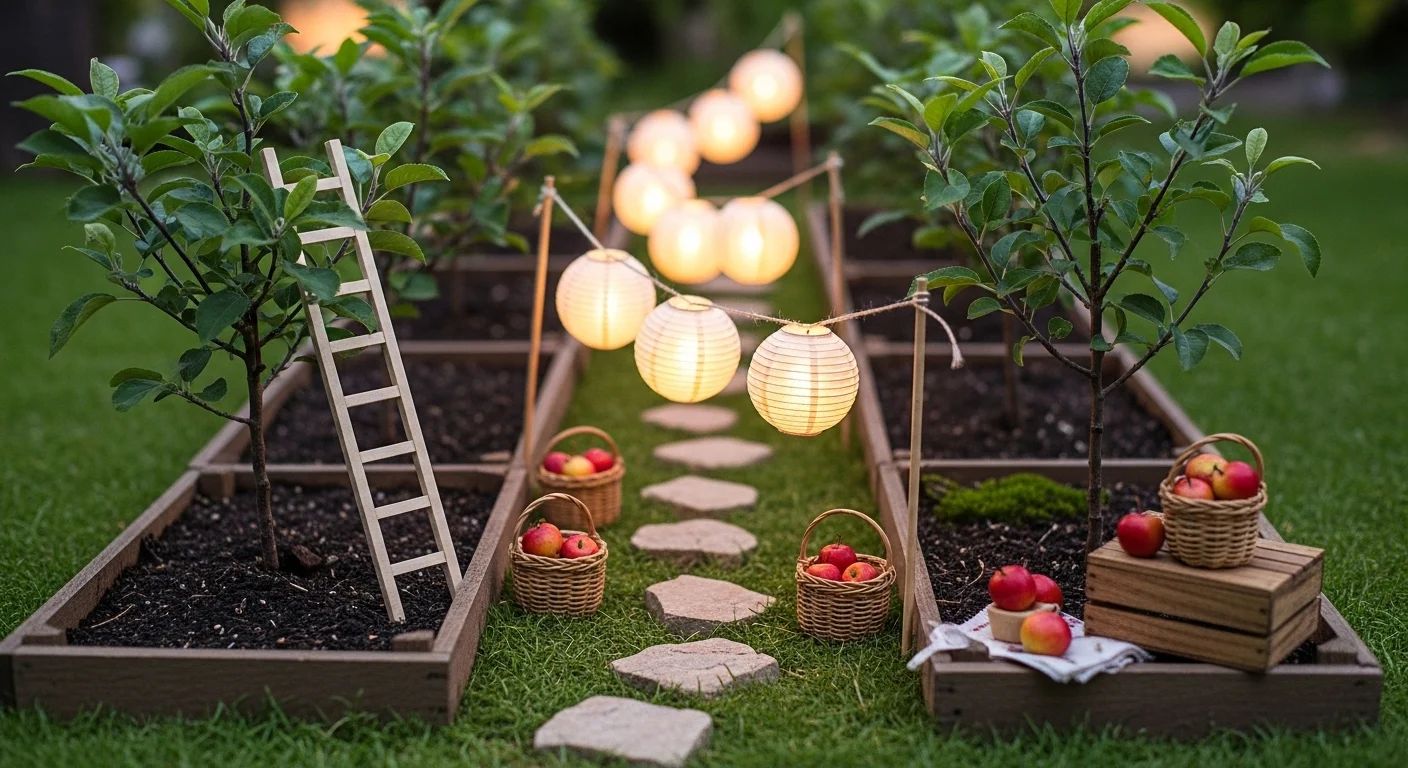Your fairy garden probably looks like every other one you see at craft stores—a few random miniature accessories thrown into a pot with some succulents, maybe a tiny plastic mushroom or two. Meanwhile, you scroll through Pinterest seeing these absolutely magical miniature landscapes that somehow feel like legitimate works of art.
Here’s what makes the difference: the best fairy gardens aren’t about cramming in as many tiny accessories as possible. They’re about creating intentional miniature worlds with the same design principles you’d use for full-scale landscaping—scale, texture, lighting, and that elusive quality that makes you want to lean in closer to discover every tiny detail.
Whether you’re working with a tabletop terrarium or a corner of your garden bed, the right approach can transform your fairy garden from cute craft project into something that genuinely captivates everyone who sees it. Ready to create miniature magic that actually looks sophisticated? Let’s build something extraordinary.
Master the Miniature Fundamentals
Before you start collecting tiny furniture and hunting for the perfect moss, let’s talk about what actually makes fairy gardens feel intentional rather than cluttered.
Scale Consistency Matters – Everything in your fairy garden should relate proportionally to everything else. Mixing wildly different scales breaks the illusion and makes it look like a collection of random miniatures rather than a cohesive world.
Quality Over Quantity – A few well-chosen, quality pieces create more impact than dozens of cheap plastic accessories. Think curated museum exhibit rather than toy store explosion.
Natural Material Focus – Real stone, actual wood, living plants, and quality metals age beautifully and photograph better than synthetic materials that look obviously fake.
Lighting Integration – Strategic lighting transforms fairy gardens from daytime curiosities into evening focal points that create genuine atmosphere.
Think Like a Landscape Architect (Just Smaller)
The most stunning fairy gardens apply legitimate design principles at miniature scale.
Layering and Depth – Create visual interest through varied heights, textures, and focal points rather than keeping everything flat and even.
Pathways and Flow – Even miniature landscapes benefit from implied movement and direction. Paths suggest exploration and draw the eye through the composition.
Seasonal Adaptability – Choose living plants that provide year-round interest or plan for seasonal styling changes that keep your fairy garden fresh.
Maintenance Reality – Consider watering access, plant care requirements, and how you’ll clean or maintain your creation over time.
15 Fairy Garden Ideas
Glass Terrarium with Marble Base
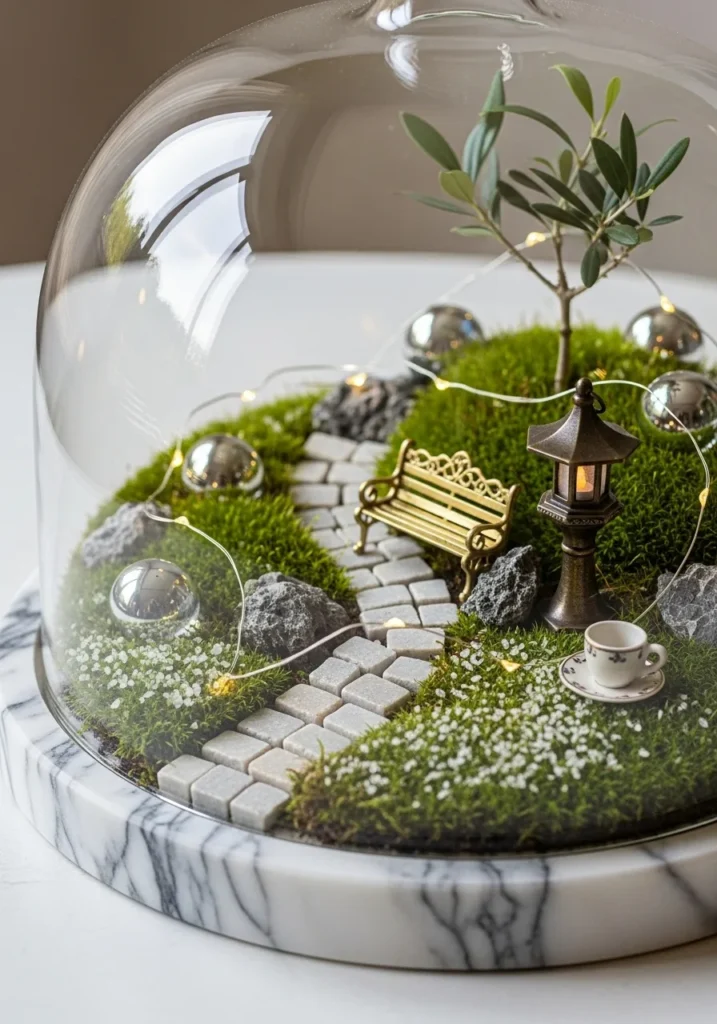
Create a sophisticated tabletop fairy garden inside a large blown-glass cloche set on bookmatched marble. Layer micro-moss lawns with tiny limestone pathways and incorporate miniature brass furniture for jewelry-like precision.
The enclosed environment maintains humidity for delicate moss while the marble base adds luxury that elevates this beyond typical craft projects. Tiny LED lights woven through the moss create magical evening ambiance.
Rooftop Fairy Courtyard
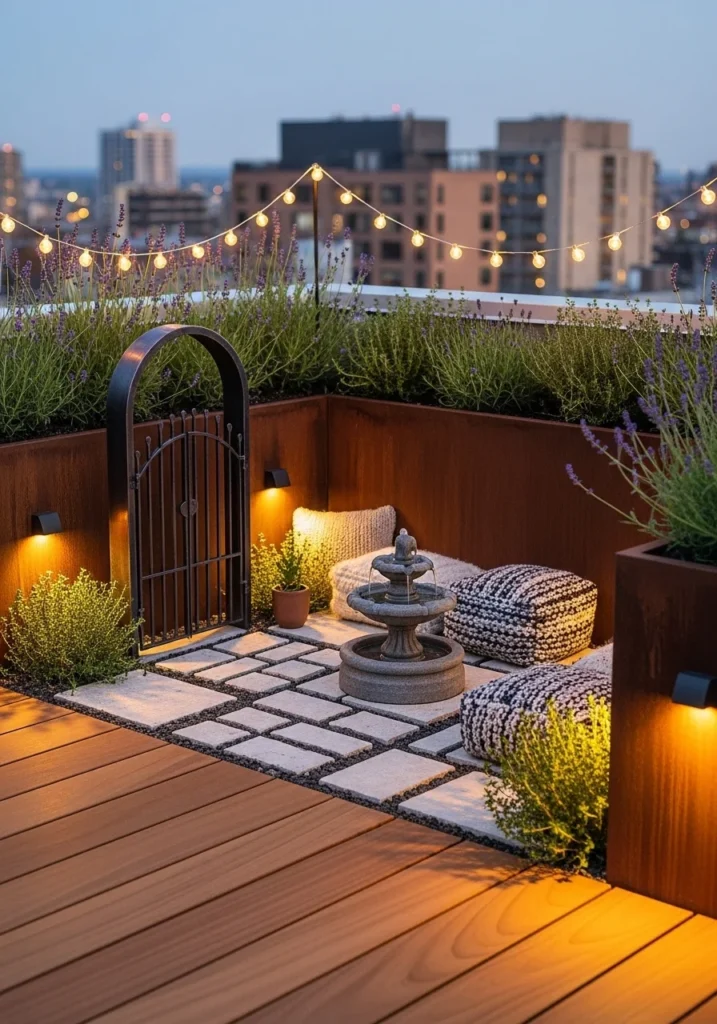
Design an elevated miniature garden in sleek corten steel planters with scaled-down modern furniture and architectural elements. This contemporary approach brings fairy garden concepts into sophisticated outdoor spaces.
The weathering steel develops beautiful patina over time while miniature festoon lighting creates evening atmosphere. Dwarf herbs like thyme and lavender provide both fragrance and realistic landscaping at fairy scale.
Mossy Stone Ruin in Formal Boxwood
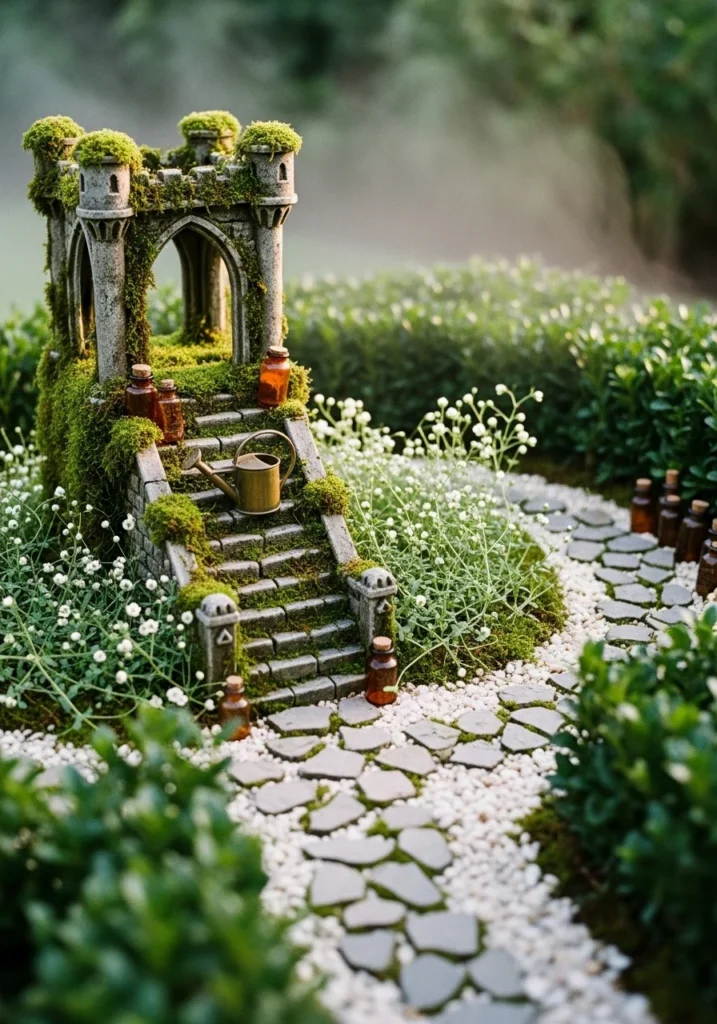
Create a romantic miniature landscape featuring weathered stone folly elements and moss-covered steps set within clipped boxwood hedging. This approach integrates fairy garden elements into formal landscape design.
The contrast between structured boxwood and organic moss-covered ruins creates visual interest while amber glass and brass accessories add refined details. Hand-laid micro-flagstone provides authentic material quality.
Minimalist Concrete and Brass Courtyard
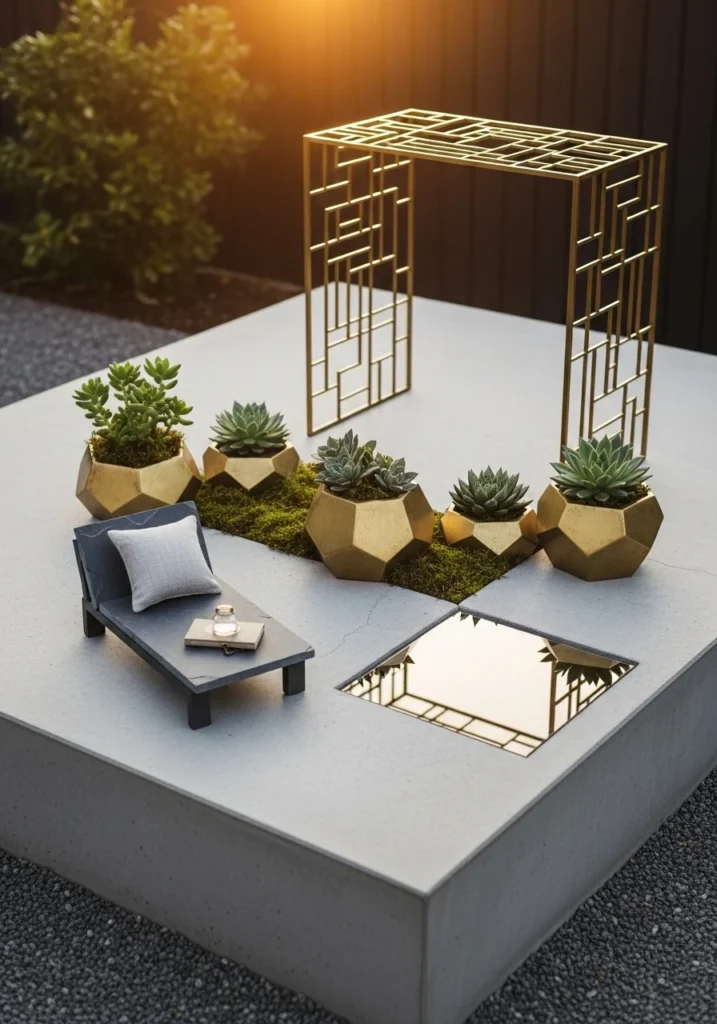
Design a contemporary fairy space on a concrete plinth with geometric brass planters and restrained succulent plantings. This modern interpretation proves fairy gardens can be sophisticated and minimal.
The limited palette of warm grays, brass, and moss green creates cohesion while a tiny water mirror adds contemplative quality. This approach works particularly well for modern interiors where whimsy needs restraint.
Also Read: 14 Dorm Room Designs That Blend Function, Style, and Serenity
Woodland Fairy Trail in Shaded Planter
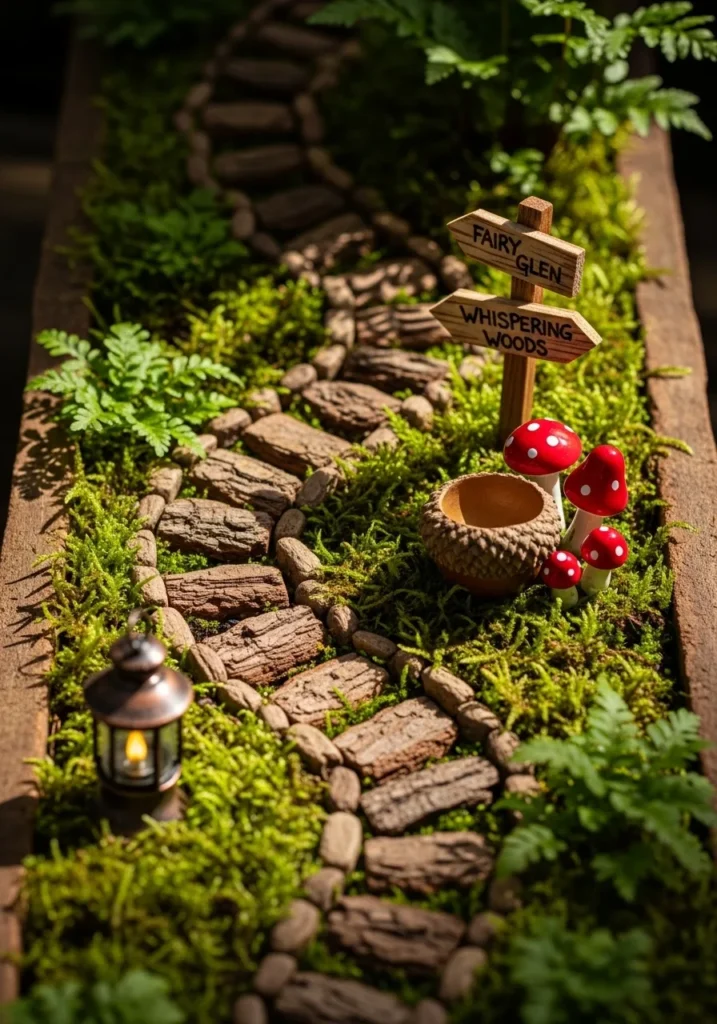
Build a lush forest-floor environment inside a deep wooden trough with stacked bark steps, sphagnum moss, and miniature ferns. This naturalistic approach creates believable woodland habitat at small scale.
Carved wooden details and copper accessories age beautifully while dappled lighting effects enhance the forest atmosphere. The deep container allows for proper drainage and root development of woodland plants.
Miniature Mediterranean Courtyard
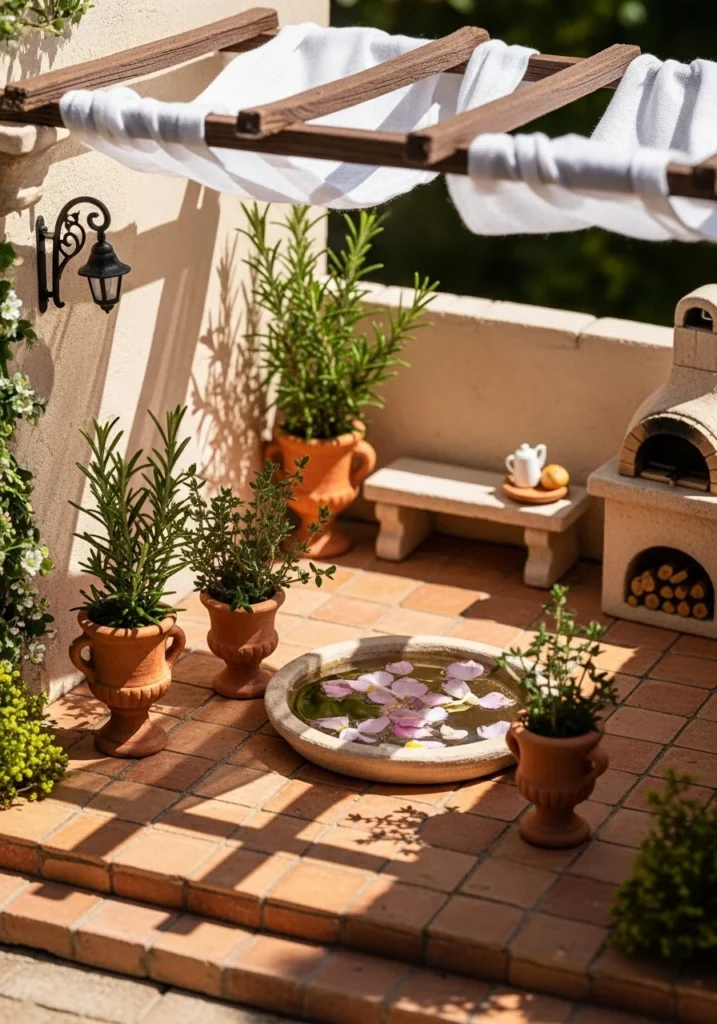
Recreate sun-drenched southern charm with warm terracotta surfaces, scaled pergolas, and miniature herb plantings. This theme translates beautifully to fairy garden scale while feeling authentic.
Shallow water features with floating petals add Mediterranean atmosphere while tiny wood-fired oven details create narrative interest. The bright light and high contrast make this particularly photogenic.
Modern Vertical Wall Garden
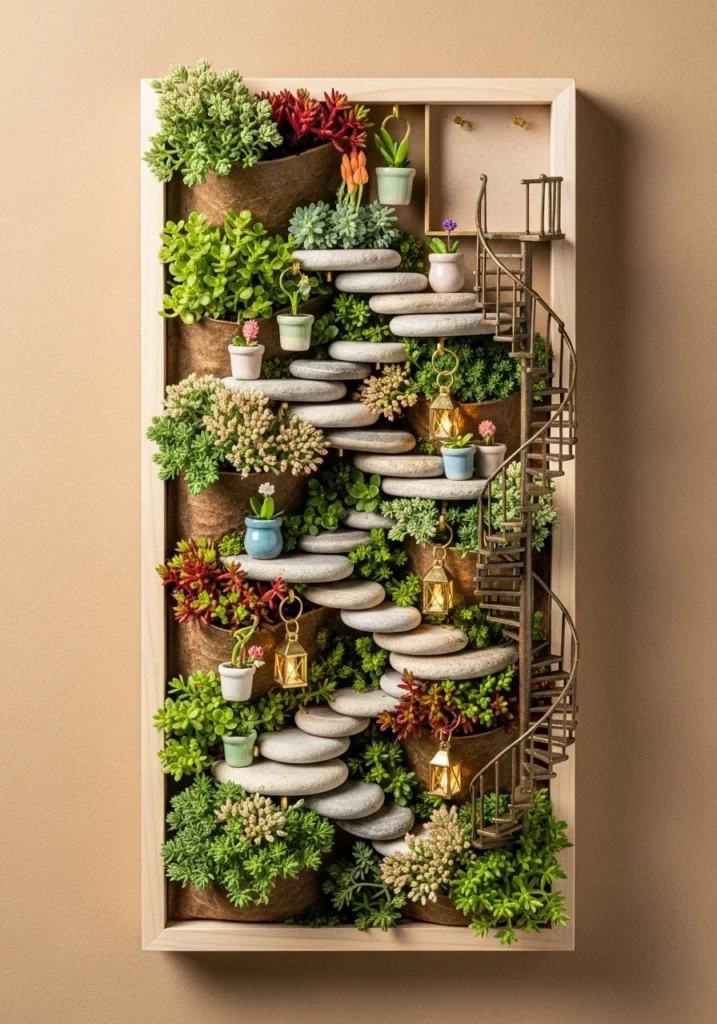
Mount a vertical fairy garden on slim timber framing with pocket planters and miniature bronze staircases connecting different levels. This space-efficient approach works well for small apartments or indoor spaces.
The vertical orientation creates dramatic visual impact while brass hardware and ceramic accessories add quality details. Sedums and other low-water plants thrive in the vertical arrangement.
Glazed Greenhouse Micro-Garden
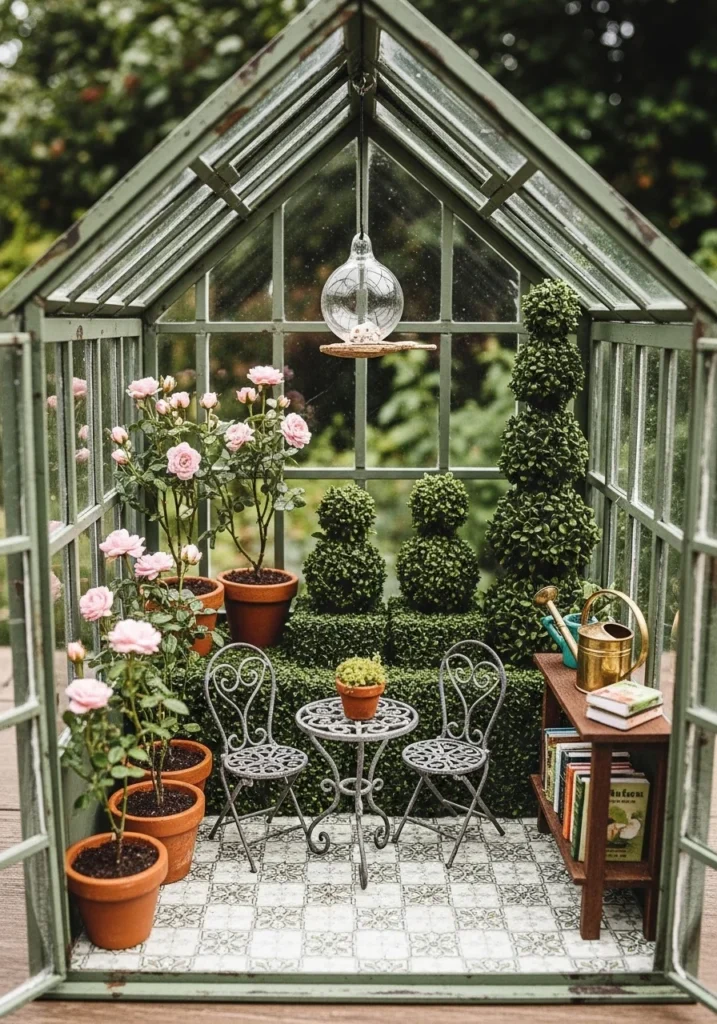
Design an intimate miniature orangery scene inside a glass structure with scaled furniture and potted miniature plants. This garden-within-a-garden concept creates sophisticated layering.
Encaustic-look flooring and brass accessories maintain quality while miniature roses and trimmed boxwood provide authentic greenhouse atmosphere. The enclosed structure protects delicate elements from weather.
Moonlit Water Garden with Basalt Basin
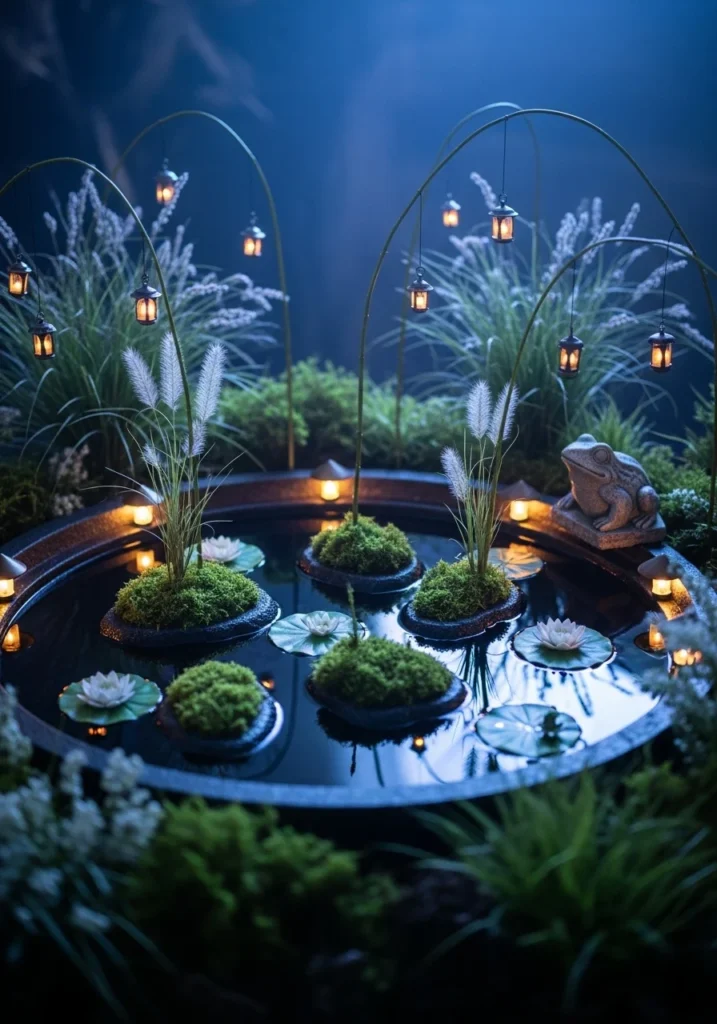
Create nocturnal drama centered on a shallow black basalt water feature with floating moss islands and illuminated details. This approach emphasizes lighting and evening enjoyment.
The combination of cool moonlight effects and warm micro-lanterns creates sophisticated ambiance while miniature willow elements soften the composition. This works beautifully for patios and evening entertaining spaces.
Luxe Succulent Arrangement on Stone Slab
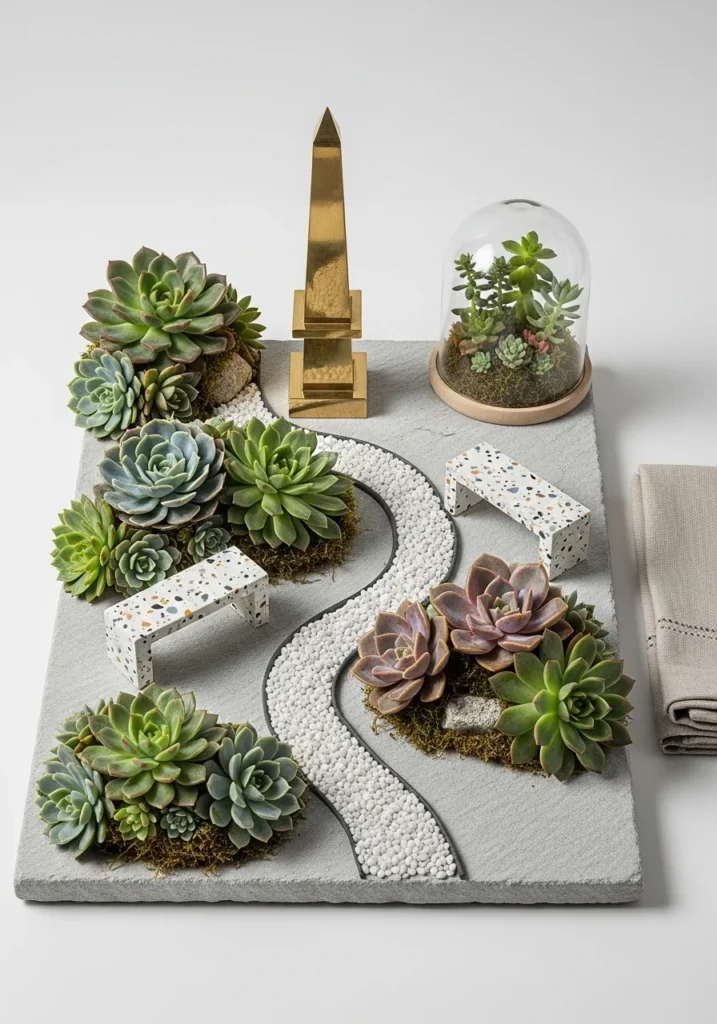
Design a contemporary vignette on a single limestone slab with sculptural succulents and miniature modern furniture. This minimal approach lets quality materials and plant forms shine.
White pebble paths and terrazzo benches maintain the refined palette while a brass obelisk provides vertical interest. The glass cloche element creates a garden-within-a-garden effect.
Enchanted Tea-Party Glade
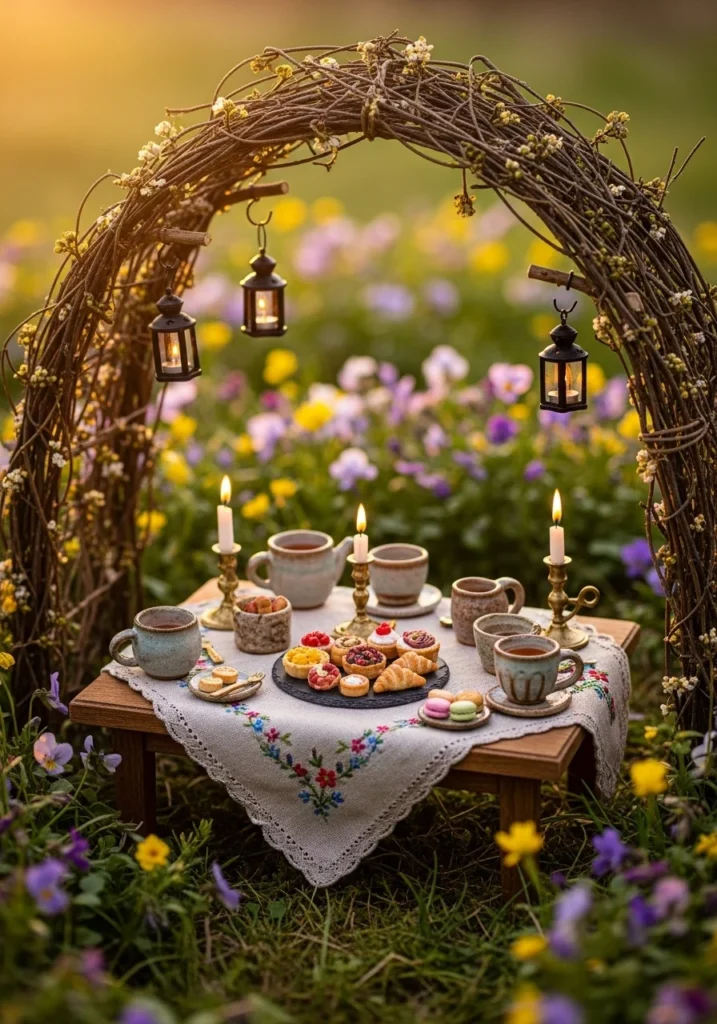
Stage a whimsical gathering scene with miniature table settings and refined details under a tiny arched arbor. This narrative approach creates engaging storytelling through careful styling.
Hand-thrown ceramic pieces and embroidered linens maintain quality while wildflowers and hanging lanterns add organic elements. This theme photographs beautifully and invites close examination.
Coastal Pebble Beach Cove
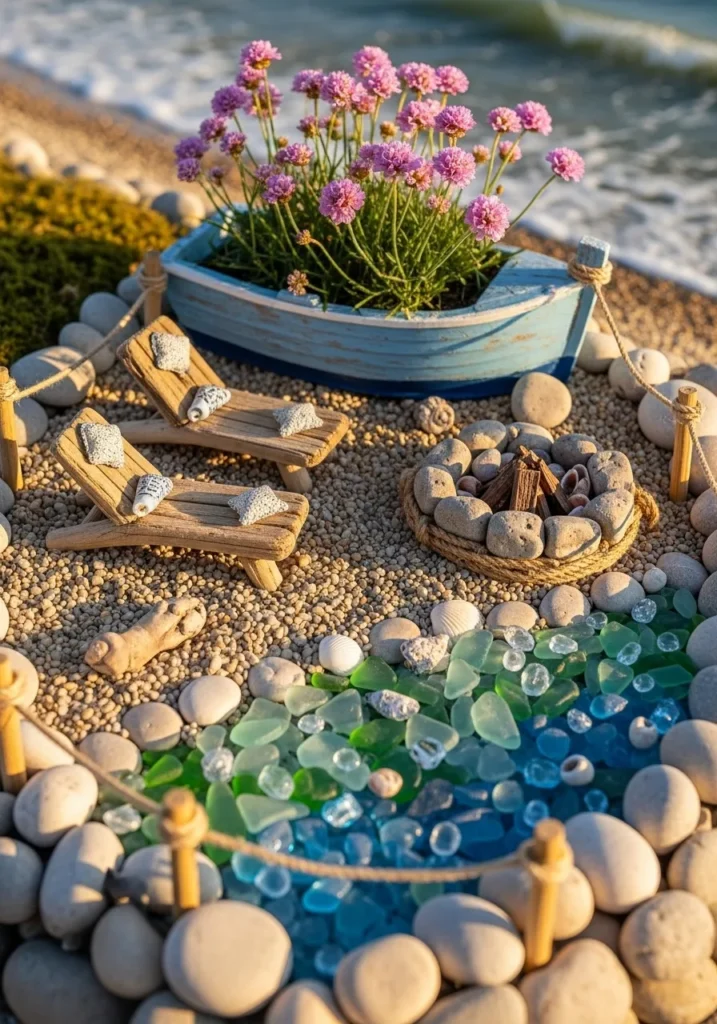
Create seaside atmosphere with pale pebbles, driftwood elements, and miniature nautical details. This theme works well for covered porches or protected outdoor areas.
Weathered materials and rope details add authentic coastal character while a glass “sea” inset provides shimmer and reflection. The casual, collected feeling makes this approachable and relaxed.
Japanese-Inspired Micro-Zen Garden
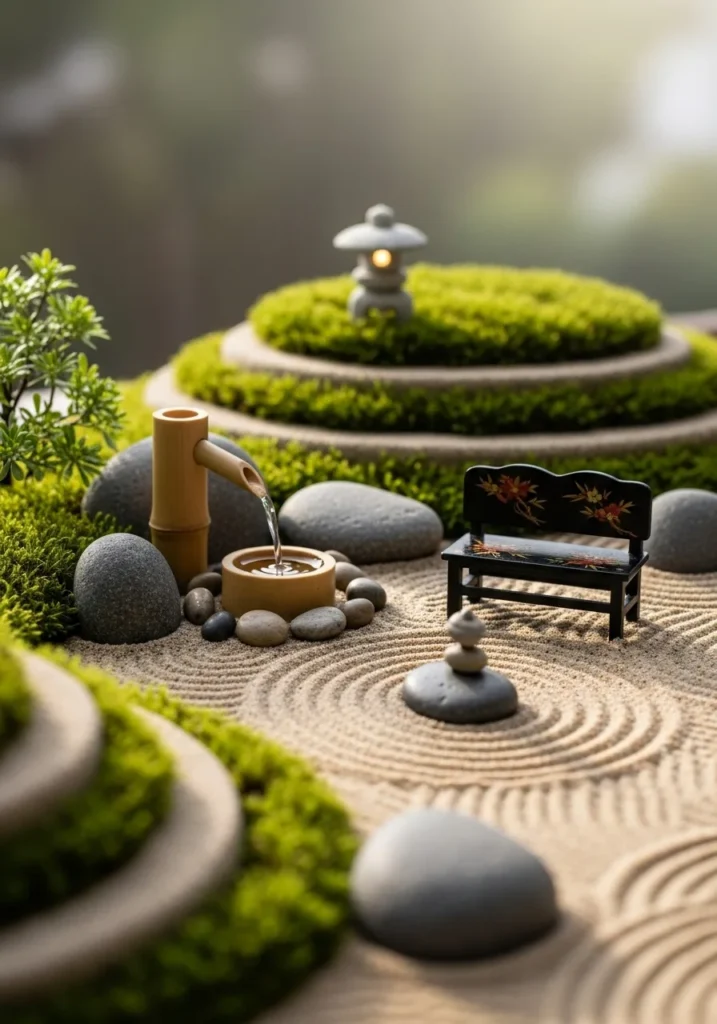
Design a serene miniature landscape with raked sand patterns, river stones, and minimal plantings. This meditative approach brings contemplative qualities to fairy garden concepts.
A miniature bamboo water feature adds gentle sound while moss terraces provide living green elements. The restrained palette and precise placement create calming sophistication.
Architectural Rock Garden Landscape
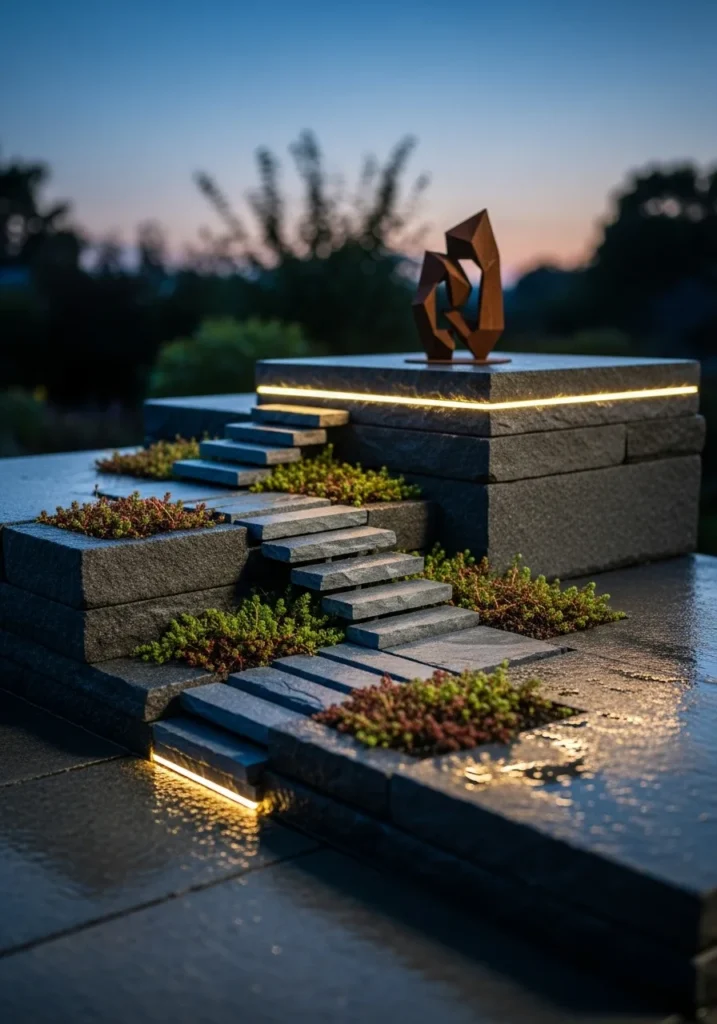
Build a contemporary terraced landscape with stacked basalt and minimal plantings emphasizing geometry and material quality. This modern approach appeals to design-forward sensibilities.
Linear LED lighting recessed into stone emphasizes architectural forms while sparse sedum plantings provide living elements without overwhelming the stone composition. This style ages beautifully as materials weather.
Seasonal Orchard Grove with Lantern Walkway
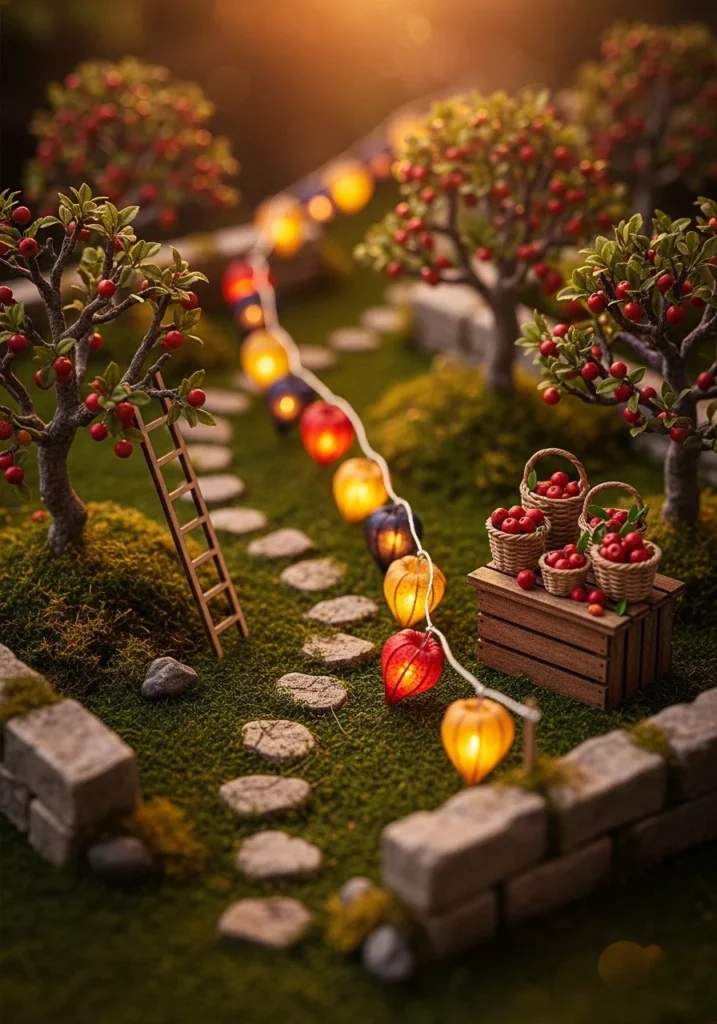
Create a productive miniature landscape with dwarf fruit trees and harvest-themed accessories. This narrative approach changes seasonally and rewards long-term cultivation.
Paper lantern pathways create evening magic while tiny harvest baskets and orchard ladders tell stories of fairy industry and seasons. The living fruit trees provide genuine seasonal interest.
Creating Miniature Magic That Lasts
Building a fairy garden that continues to delight rather than becoming neglected after the initial excitement requires thinking about long-term maintenance and seasonal changes from the beginning.
Choose living plants appropriate for your climate and light conditions rather than trying to force plants that won’t thrive. Consider how your fairy garden will look in different seasons and whether you want year-round interest or accept that it might be primarily a warm-weather feature.
The most successful fairy gardens become genuine focal points that draw attention and spark conversation. When guests lean in to examine the tiny details and ask where you sourced specific elements, you’ll know you’ve created something that transcends the typical craft-project aesthetic and becomes legitimate landscape art at miniature scale.

